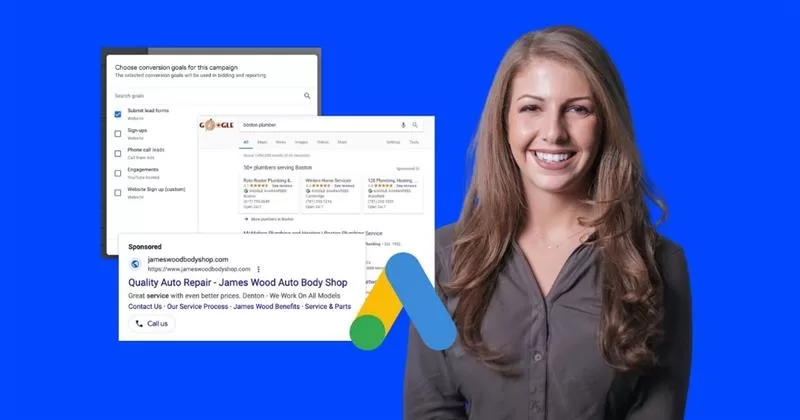Over the last few years, there have been quite a few changes to how keywords work on the Google Ads platform. Whether it was the addition (and subsequent removal) of the modified broad match type, the introduction of close variants for exact match, or the shift in how phrase matching will apply, there’s constantly something new happening that causes Search campaigns to perform differently than they used to.
Recently, Google made another query matching announcement that we advertisers will need to adjust for. There are two main portions to this announcement that I want to run through. Let’s go in the same order Google did.
Contents
- Changes to brand inclusion and exclusion lists
- Updates to Google Ads query matching for misspellings
- Key takeaways from the latest Google Ads query matching announcements
Changes to brand inclusion and exclusion lists
Despite some changes to brand Inclusion and exclusion options across different campaign types, Google was still hearing the need for further controls.
💡 Could your Google Ads account benefit from trying broad match keywords or brand lists? Get an instant read on your account performance, and uncover optimization ideas, with our Free Google Ads Grader!
Brand inclusion lists for broad match
The first change will impact brand inclusion lists for broad match campaigns and keywords. Brand keywords are highly valuable terms, especially for promotions, and can be very specific, whereas broad match tends to jump the shark and match to irrelevant queries at times. That means that without brand inclusion lists, you might see your brand keywords match to queries that are decidedly not “brand” focused.
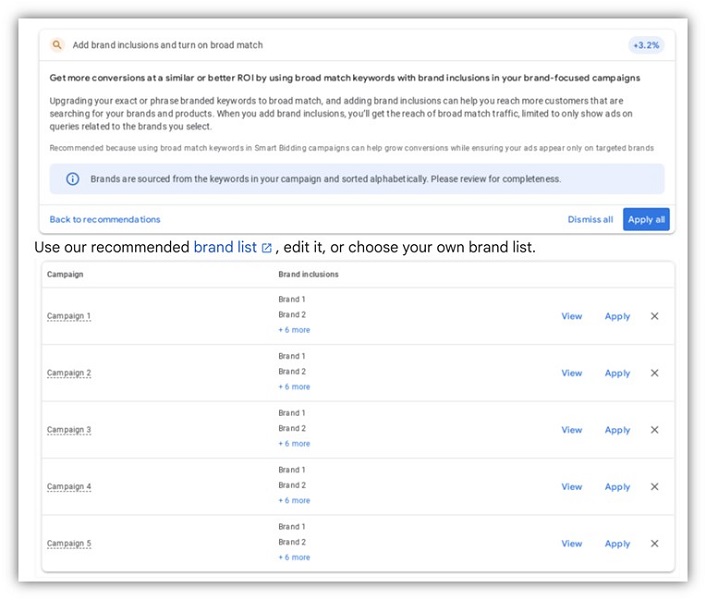
With this change, Google will make suggestions directly in the recommendations tab for which brand inclusion lists you should apply to a campaign to retain better brand control.
One BIG caveat to this change is in the subsequent paragraph: “By applying this Recommendation, you will turn on the broad match campaign setting in your campaigns.”
Here’s a quick view of what that looks like in an existing campaign.
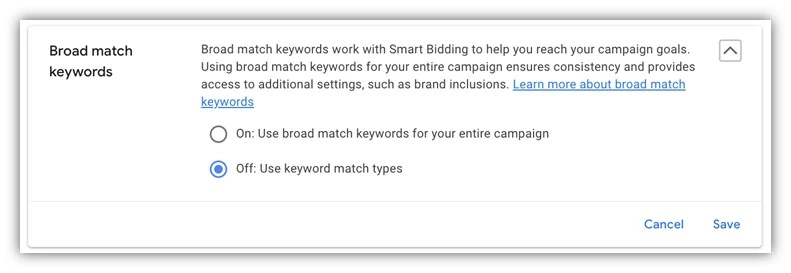
Here’s what it does: it changes ALL of your existing keywords to broad match terms, then uses Google’s matching prioritization to determine what to show for. Granted, it does say this is only available with smart bidding, which, in my experience, is the best way to use broad match.
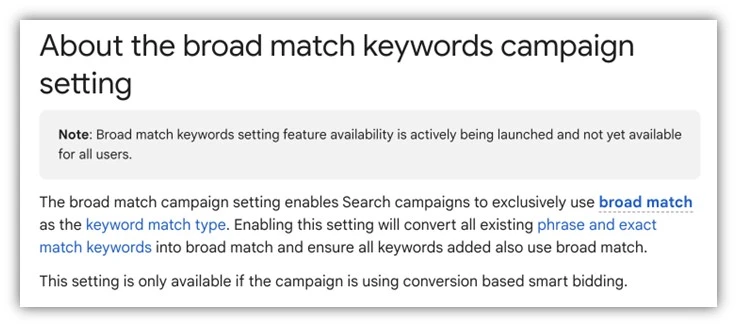
But also, if you don’t want to leverage broad match keywords in your campaign, this might not be the best opportunity to jump on.
Brand exclusion lists for all match types and dynamic search ads
The second new change for brand keyword bidding is on the opposite end: exclusion. Google has had brand exclusion lists for Performance Max campaigns for a while now, helping advertisers keep PMAX from cannibalizing their branded search query traffic for a while now.
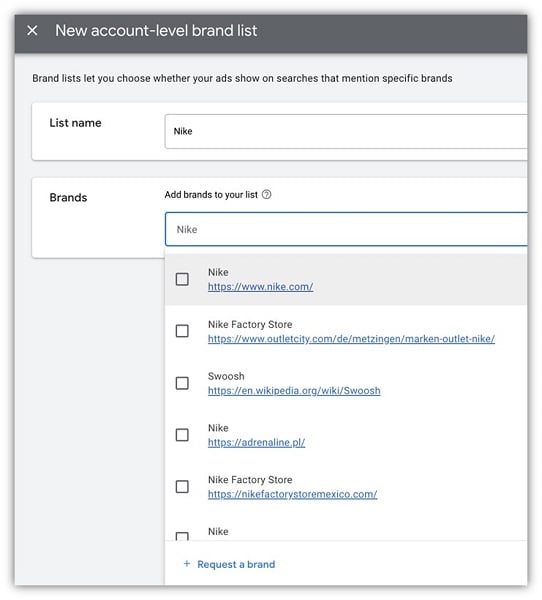
With this change, Google now is rolling out brand exclusion lists to all match types and Dynamic Search Ads campaigns, providing even more control over which brands you exclude from your campaigns.

To me, this seems like an easy win and likely will only impact those folks who have a hard time segmenting their brand versus another. If you find yourself in that situation, go ahead and give these brand exclusion lists and try and see if they help you stay away from those unwanted queries.
Updates to Google Ads query matching for misspellings
Misspelled words are just part of being human and when it comes to search terms, there’s been a history of different approaches to deal with them. Advertisers used to add all sorts of misspelled keywords, especially incorrect variations of brand terms, to their campaigns to ensure full coverage. Then over time, those misspellings found their way in via close variant matching.
In Google’s announcement, there are two things that will impact misspellings. The first is changes to the search terms reporting for misspelled queries so that advertisers can now see data from these terms. The second is that a misspelled variation of a term will also be applied to the core negative keyword term—saving advertisers time spent on adding these misspelled terms as additional negative keywords.
🔍 Want new ideas for keywords and negative keywords complete with keyword competition and cost data? Try our Free Keyword Tool!
Improved visibility for misspellings
In the past, when reviewing your Google Ads search terms report, all misspellings of a word would have been categorized as “Other” as they didn’t meet the privacy threshold for reporting.
Moving forward, these will now be grouped under the correct spelling of the keyword. There won’t be new line items, but the data from the misspellings will be grouped together.
The impact will be, as Google says, about a 9% increase in volume being attributed to your properly spelled search queries and removed from the “Other” category. In my book, this is a win even if it’s not a 100% fully transparent system.
Improved misspelling matches for negative keywords
Unlike your targeted keywords, until now, negative keywords ONLY applied to the exact same spelling that you had in your negative keywords. That meant that to block misspellings, you would have to take a trip back to the strategies of 2010 and add every single misspelled variant of your keywords to get rid of them.
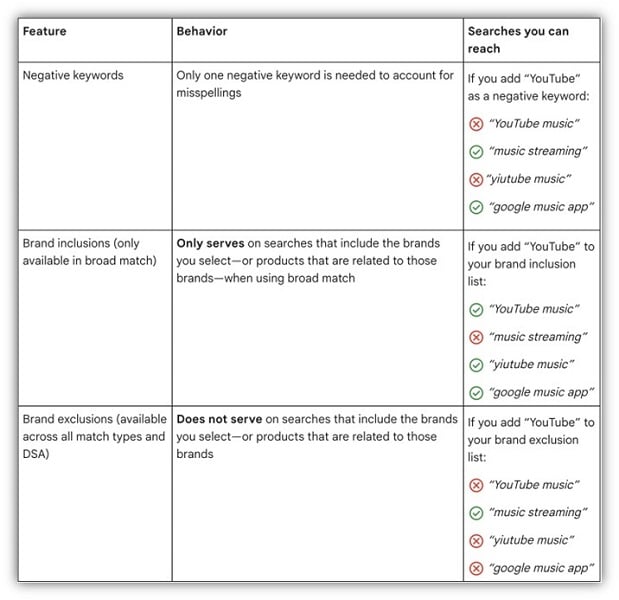
With this change, Google now is going to apply that same misspelling expansion to negative keywords as well. In the table above, the first line is the best example of this. You can see that by adding “youtube” as a negative keyword, it will now apply to the misspelled version of the query as well.
The subsequent lines give insight into how brand inclusion and exclusion lists work in contrast to negative keywords if you need a refresher.
Overall, I’m a big fan of this change. In my experience, misspellings are typically a much lower volume segment, but can be a real pain if you’re trying to control costs and keep click quality high. This is a welcome change for me in my accounts and likely will help me avoid having quite so many negatives in a few accounts where keywords are more complex and tough to get right.
Key takeaways from the latest Google Ads query matching announcements
As Google’s machine learning continues to expand and grow, they’ll continue making changes like this to how the platform works. Ideally, they’re always going to make changes we like. But if they don’t, we still need to stay on top of the changes, understand how they work, so we can keep our accounts and our client accounts in the best position to see results.
Let these latest Google Ads query matching updates be a reminder to regularly reevaluate your PPC keyword targeting strategies. If you’re ready to uncover more ways to take advantage of the latest Google Ads updates as they roll out, see how our solutions can help you optimize your campaigns and maximize your search ads results!






